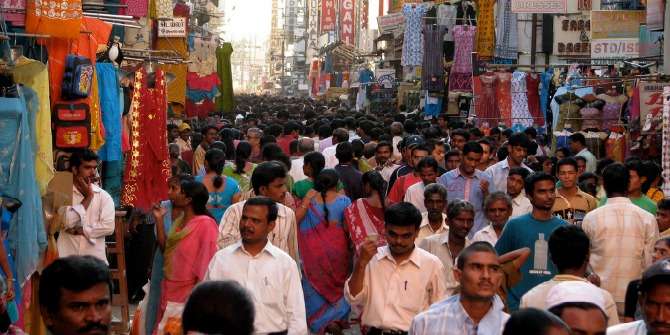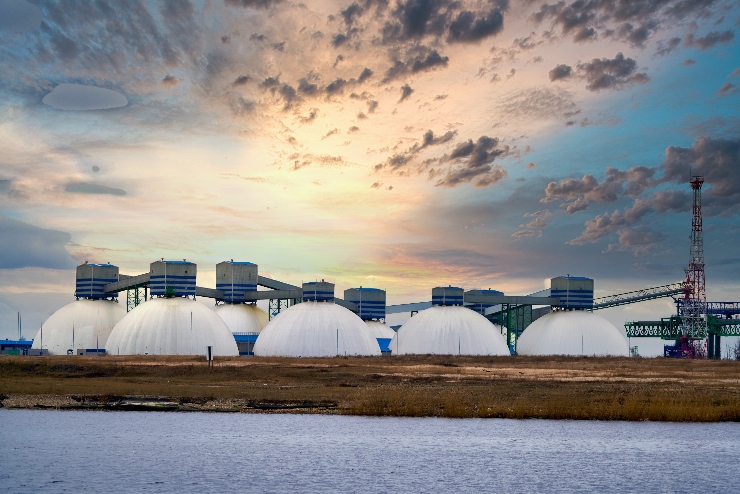
The expansion of India’s exports of services between 1990 and 2013 has been nothing short of spectacular, putting India on a par with the world’s high-income economies in terms of service-product sophistication and as a share of total exports. This has created unique opportunities for continued growth. By contrast, when it comes to exports of manufactured goods, India has lagged behind its emerging-markets peers, both in quality and as a percentage of the total export basket, leaving substantial room for improvement.
While trade leads to structural transformation and diversification of economies, the types of goods and services traded—and trading partners—make all the difference. India should capitalize further on its comparative advantage in exports of high-value services. At the same time, it should also increase the quality, sophistication, and diversification of manufacturing. That way, India can expand its total exports, while improving the sophistication of goods and services, and diversifying into higher value-added activities that generate better jobs for Indians.
Our new paper looks at the evolution and prospects of India’s exports documents and analyzes the technological content, quality, sophistication, and complexity of India’s export basket. It also discusses their implications for future export performance, structural transformation, and growth.
India’s exports evolution
The evolution of Indian exports follows a unique growth model: a well-integrated, technologically advanced, and highly sophisticated service sector thrives alongside a lagging manufacturing sector. At 32 percent, the share of services in total exports is now more than double the average for emerging markets (EMs) and exceeds that of many advanced-income economies. At the same time, the share of goods exports in total exports declined from nearly 80 percent in 1990 to 67 percent in 2013.
India owes its rapid growth in service exports to the emergence of modern services, defined as products that can be stored and traded digitally. The fastest-growing sector of the global economy, exports of modern services account for nearly 70 percent of India’s total commercial-services exports, double the average for emerging markets.
Though no developing economy performed as spectacularly as China between 1980 and 2013, most have seen sharp increases in manufacturing’s share of total exports. India’s manufacturing exports as a share of total goods exports rose from 58 to 64 per cent, but in contrast to its highly evolved and sophisticated modern services sector, India’s product quality trails that of both China and other EMs.
In line with global trends, Indian exports shifted from the European Union and the United States toward emerging and developing economies. East Asia and the Middle East have emerged as the top two destination markets.
Implications for the future
Goods differ in productivity and therefore in their future growth consequences, and development involves not just making more of something but also introducing new, more sophisticated products. Because of revealed comparative advantage, countries tend to add to their export mix whatever is more, rather than less, closely related to the goods already being manufactured (a country has revealed comparative advantage when the share of a given product in a country’s total exports is larger than the share of that product in total global exports).
India is no exception in the pattern it follows while expanding its export basket. Existing revealed comparative advantage in various products, such as textiles, has led to comparative advantage and export growth in related product clusters, such as fabrics, garment technology, etc. Similarly, emerging comparative advantage in research and development can lead to expansion of other high-value exports of modern services.
Recommendations
The income and employment potential of Indian exports could further benefit from the following structural and policy changes:
- Increasing the value and quality of high- and medium-tech manufactured exports (low-skill or low-tech products would likely face an incumbency disadvantage relative to lower-cost producers).
- Diversifying services that underpin modern the manufacturing supply chain and capitalizing on emerging comparative advantage in aerospace, pharmaceuticals, chemical and mechanical-engineering research and development.
- Expanding exports to new markets, especially South Asian neighbors.
- Optimizing policies to promote export through reducing trade costs; liberalizing foreign direct investment rules; improving urban infrastructure; developing labor’s technological skills and the future market’s flexibility; and fostering innovation and entrepreneurship to enable higher productivity activities.
- New technology and cultural inventions from India would shape the wave of economic growth. For example, California with a population barely 3 percent of India has the GDP which is very similar to India’s. It is driven by a pocket of few concentrated yet uniquely specialized hubs of exports within California. Similar clusters with unique new inventions could be a source of growth engine in India too, and would require an enabling environment for openness and creative inventions in India. This could help move faster towards convergence.
♣♣♣
Notes:
- This post was originally published on iMFdirect and is republished with permission.
- The article is based on the IMF Working Paper Make in India: Which Exports Can Drive the Next Wave of Growth?
- The post gives the views of its authors, not the position of LSE Business Review or the London School of Economics.
- Featured image credit: Chennai’s T.Nagar Market, by McKay Savage CC-BY-2.0
 Rahul Anand is Assistant to the Director in the IMF’s Institute for Capacity Development, working on India. He has also worked in the IMF’s Asia and Pacific Department. Prior to joining the IMF, he worked for the Government of India. His research interests and publications focus on general equilibrium modeling of monetary transmission, labor market rigidities, and financial sector reforms; inclusive growth; structural transformation; and subsidy reforms. He holds a PhD from Cornell, and a Masters from Harvard.
Rahul Anand is Assistant to the Director in the IMF’s Institute for Capacity Development, working on India. He has also worked in the IMF’s Asia and Pacific Department. Prior to joining the IMF, he worked for the Government of India. His research interests and publications focus on general equilibrium modeling of monetary transmission, labor market rigidities, and financial sector reforms; inclusive growth; structural transformation; and subsidy reforms. He holds a PhD from Cornell, and a Masters from Harvard.
 Kalpana Kochhar is currently a Deputy Director in the Asia and Pacific Department of the IMF. Between 2012 and 2014, she was Deputy Director in the Strategy, Policy and Review Department. Between 2010 and 2012, she was the Chief Economist for the South Asia Region of the World Bank. At the IMF, she has led work on Japan, India, Sri Lanka, Maldives, Bhutan, Nepal. She has also worked on China, Korea, Malaysia, and the Philippines. Prior to taking this position, she spent time in the IMF’s Strategy, Policy and Review and Research Departments. She holds a Ph.D. and an M.A. in Economics from Brown University and an M.A. in Economics from Delhi School of Economics in India.
Kalpana Kochhar is currently a Deputy Director in the Asia and Pacific Department of the IMF. Between 2012 and 2014, she was Deputy Director in the Strategy, Policy and Review Department. Between 2010 and 2012, she was the Chief Economist for the South Asia Region of the World Bank. At the IMF, she has led work on Japan, India, Sri Lanka, Maldives, Bhutan, Nepal. She has also worked on China, Korea, Malaysia, and the Philippines. Prior to taking this position, she spent time in the IMF’s Strategy, Policy and Review and Research Departments. She holds a Ph.D. and an M.A. in Economics from Brown University and an M.A. in Economics from Delhi School of Economics in India.
 Saurabh Mishra served in the IMF’s Jobs and Growth Group from 2013-15. Previously, he served on a range of operations at the World Bank Group from 2008-2012, and consulted with many organizations including the International Finance Corporation, the Organization for Economic Co-Operation and Development and the World Trade Organization. He has written extensively on macroeconomics, technology, inequality, trade and structural transformation. He holds a BA in Economics and MS in Applied Economics and Finance from the University of California Santa Cruz, and is a PhD student in Reliability Engineering at the University of Maryland College Park.
Saurabh Mishra served in the IMF’s Jobs and Growth Group from 2013-15. Previously, he served on a range of operations at the World Bank Group from 2008-2012, and consulted with many organizations including the International Finance Corporation, the Organization for Economic Co-Operation and Development and the World Trade Organization. He has written extensively on macroeconomics, technology, inequality, trade and structural transformation. He holds a BA in Economics and MS in Applied Economics and Finance from the University of California Santa Cruz, and is a PhD student in Reliability Engineering at the University of Maryland College Park.





